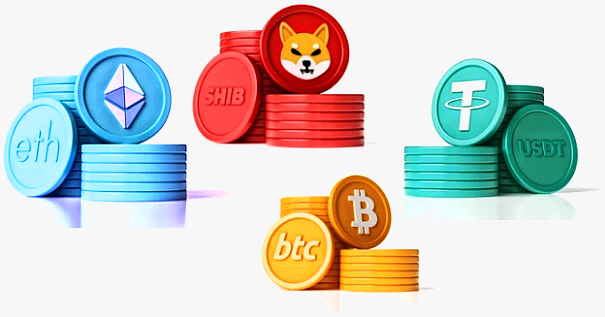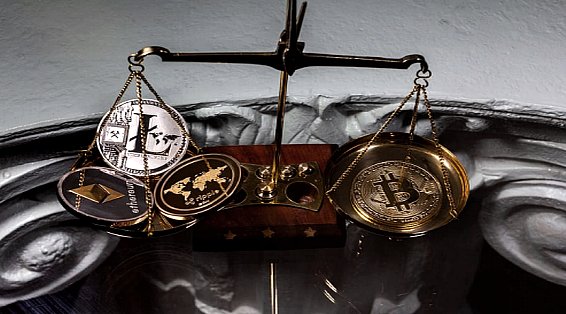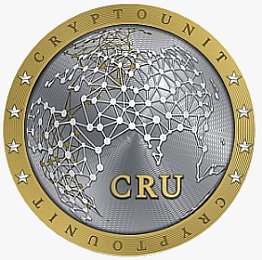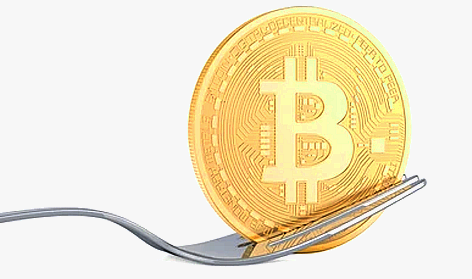Accredited InvestorsAltcoinAnatoli UnitskyAnti-Money Laundering (AML) In CryptoAPIArbitrageArtCoin TokenArticle DirectoryASICAuction Terminology GlossaryBasics of Stock Market InvestingBear MarketBest Crypto Payment Provider In the WorldBitcoinBlockchainBlockchain ConfirmationBlockchain Consensus MechanismBlockchain ForkBlockchain GlossaryBored Ape Yacht ClubBuild a Business That OutperformsBull MarketBuying SkyWay SharesByzantine Fault Tolerance (BFT) ExplainedCasascius CoinCentral Bank Digital Currency (CBDC)Centralized Crypto ExchangeCoinCoinsetCold WalletCollateralCommodity Futures Trading Commission (CFTC)Cross-Chain TechnologyCRUCrypto ExchangeCrypto GlossaryCrypto JokesCrypto Terms to KnowCrypto TickerCryptocurrencyCryptographyCryptojackingCryptounit BlockchainCryptounit GlossaryCryptounit ProgramdApp (Decentralized Application)Dead CoinDecentralized Exchange (DEX)Decentralized Finance (DeFi)Difference Between Bitcoin and EthereumDifferent Ways of Investing MoneyDigital CurrencyDistributed LedgerDo Your Own Research (DYOR)Dollar Cost Averaging (DCA)Dow Jones Industrial Average (DJIA)EncryptionERC-20ERC-721EthereumEvoScentFear Of Missing Out (FOMO)Fear, Uncertainty and Doubt (FUD)Fiat MoneyFNT Fintech CompanyGenesis BlockGlobal Unit PayGlossary of Banking TermsGlossary of Business TermsGlossary of Financial TermsHalvingHODLHot WalletHow Do I Start InvestingHow Rich is Satoshi Nakamoto?How to Create a BlockchainHow to Find Private InvestorsHow to Get Into FintechHow to Program Smart ContractsI Am Thrilled to Be a Part of This Global ProjectInitial Coin Offering (ICO)Initial Public Offering (IPO)Initial Token Offering (ITO)Innovation Basalt TechnologyInnovative Transportation TechnologiesInternational Bank Account Number (IBAN)Investing in Gold Mining StocksInvesting in Gold MiningJagerJoy of Missing Out (JOMO)Know Your Customer (KYC)LedgerLiquidity in CryptocurrencyMaker and Taker Fees in Crypto TradingMarket Capitalization (Market Cap)Meme CoinMetal Credit CardMetaMaskMillenials Now Have Access to Generational WealthMy Best Investment EverNew Digital EvolutionNFT GlossaryOff-Chain TransactionsOn-Chain TransactionsOpen Edition NFTPeer-to-Peer (P2P)Personal Loan GlossaryProbably the Best STO on the MarketProof of Stake (PoS)Real Estate Glossary of TermsReal Estate Investing GlossaryRebase TokenSecurities and Exchange Commission (SEC)Security Token ExchangesSecurity Token Offering (STO)Soulbound Decentralized Identities for Security TokensSoulbound ID Launch by Stobox Proves a SuccessSoulbound TokensStoboxStock Market GlossaryTestimonialsTether Platform and Token (USDT)UnitEx ExchangeUnitsky String TechnologiesUNTBUSDUValidatorWe Started Investing When We Were 25What are Blue Chip NFT?What are Blue Chip Stocks?What are Crypto Assets?What are Crypto Smart Contracts?What are CryptoPunks NFT?What are Digital Assets?What are Digital Collectibles?What are Gas Fees?What are Gas Wars?What are Hashmasks?What are Non Fungible Tokens?What are Non-Sufficient Funds (NSF)?What are Soulbound Tokens (SBT)?What are Stablecoins in Crypto?What are Transactions Per Second (TPS)?What are Utility NFTs?What are Utility Tokens?What Does Burning Crypto Mean?What Does Diamond Hands Mean?What Does Paper Hands Mean?What Does To The Moon Mean?What Does WAGMI Mean?What Happened to Satoshi Nakamoto?What is a 51% Attack?What is a Baby Boomer?What is a Backlink?What is a Banner?What is a Barcode?What is a Bid-Ask Spread in Crypto?What is a Block in Blockchain?What is a Block Reward?What is a Blockchain Address?What is a Blockchain Node?What is a Blockchain Oracle?What is a Blog?What is a Bond?What is a Bot?What is a Broker?What is a Business Accelerator?What is a Cash Cow?What is a Commercial Bank?What is a Commodity?What is a Con?What is a Credit?What is a Credit Limit?What is a Credit Rating?What is a Crypto Airdrop?What is a Crypto Bridge?What is a Crypto Scam?What is a Crypto Token?What is a Crypto Wallet?What is a Crypto Whale?What is a Crypto Winter?What is a Cryptocurrency Public Ledger?What is a Cryptocurrency Roadmap?What is a DAO?What is a Dark Pool?What is a Day Trader?What is a Dead Cat Bounce?What is a Default?What is a Derivative?What is a Digital Credit Card?What is a Fiscal Quarter?What is a Fungible Token?What is a Governance Token?What is a Grace Period?What is a Hard Fork?What is a Hot Wallet?What is a Hybrid Blockchain?What is a Hybrid PoW/PoS?What is a Joint Account?What is a Market Cap?What is a Merkle Tree in Blockchain?What is a Mining Farm?What is a Nonce? What is a PFP NFT?What is a POS System?What is a Prepaid Card?What is a Private Blockchain?What is a Private Key?What is a Public Blockchain?What is a Public Key?What is a Reserve Currency?What is a Ring Signature?What is a Routing Number?What is a Rug Pull in Crypto?What is a Safe Deposit Box?What is a Satoshi?What is a Security Token?What is a Seed Phrase?What is a Shitcoin?What is a Sidechain?What is a Soft Fork?What is a Spot Market?What is a State Bank?What is a SWIFT Code?What is a Tax Identification Number (TIN)?What is a Time Deposit?What is a Transaction Account?What is a Variable Interest Rate?What is a Virtual Assistant (VA)?What is a Virtual Card?What is a Virtual Currency?What is a Visa Card?What is a Whitelist in Crypto?What is a Whitepaper?What is Accounts Payable (AP)?What is AMA in Crypto?What is Amortization?What is an Accrual?What is an ACH Transfer?What is an Actuary?What is an Addendum?What is an Algorithm?What is an Angel Investor?What is an Annuity?What is an Asset?What is an ATM?What is an Atomic Swap?What is an Audit?What is an Avatar?What is an EIN?What is an Embargo?What is an Entrepreneur?What is an IDO (Initial Dex Offering)?What is an Interest Rate?What is an Internet cookie?What is an Investment Bank?What is an NFT Drop?What is an NFT Floor Price?What is an Ommer Block?What is an Orphan Block?What is an Outstanding Check?What is an Overdraft?What is Artificial Intelligence (AI)?What is B2B (Business-to-Business)?What is B2G (Business-to-Government)?What is Bartering?What is Bitcoin Dominance?What is Bitcoin Pizza Day?What is Blockchain Immutability?What is Blockchain Used For?What is BRICS?What is Business-to-Consumer (B2C)?What is C2C (Customer to Customer)?What is Capitalism?What is Catfishing?What is CFD Trading?What is Check Kiting?What is Cloud Mining?What is Communism?What is Content Marketing?What is Decentralization in Blockchain?What is DeFi in Crypto?What is Delisting?What is Depreciation?What is Digital Marketing?What is Diversification?What is Double Spending?What is Dumb Money?What is Dumping?What is Earnings Per Share (EPS)?What is Economics?What is Email Marketing?What is Equity?What is Etherscan?What is Fintech?What is Foreign currency?What is Forex?What is Fundamental Analysis (FA)?What is GameFi?What is Generative Art NFT?What is Gwei?What is Hard Currency?What is Hash Rate?What is Hashing in Blockchain?What is Inflation?What is Initial Game Offering (IGO)?What is Interest?What is Interest Income?What is Mainnet?What is Mastercard?What is Metaverse in Crypto?What is Mining in Cryptocurrency?What is Minting NFT?What is Mobile Banking?What is Money Laundering?What is NFT Alpha?What is NFT Metadata?What is NFT Rarity?What is NGMI Meaning?What is Nominal Interest Rate?What is Online Banking?What is Open-End Credit?What is OpenSea NFT Marketplace?What is Personal Identification Number (PIN)?What is Play-to-Earn?What is Polygon?What is Proof of Authority (PoA)?What is Proof of Work (PoW)?What is Public Key Cryptography?What is Pump and Dump?What is Quantum Computing?What is Refinancing?What is Retail Banking?What is Ripple?What is Sharding?What is Slippage in Crypto?What is Smart Money?What is Solvency?What is Soulbound ID?What is SSL?What is Staking in Cryptocurrency?What is Technical Analysis (TA)?What is Testnet?What is the Ask Price?What is the Better Business Bureau (BBB)?What is the Bid Price?What is the Dark Web?What is the InterPlanetary File System (IPFS)?What is the Gold Standard?What is the Lightning Network?What is the Prime Rate?What is the Sandbox?What is the Secondary Market?What is the World Bank?What is Tier 1 Capital?What is Tokenomics?What is TRC-20?What is Universal Banking?What is Unspent Transaction Output (UTXO)?What is Usury?What is Volatility in Crypto?What is Wash Trading?What is Web3?What is Whisper?What is XRP?What is Zero-Knowledge Proof (ZKP)?Who is Beeple?Who is Satoshi Nakamoto?Who is Vitalik Buterin?Why Tokenization is a Safe HavenWhy You Should Try Your Hand at Trading
Crypto Ticker
- Home
- Crypto Glossary
- Crypto Ticker
Symbols in the stock market were introduced in the 19th century to streamline floor trading. To avoid listing the entire name of each company and its price, a short abbreviation or ticker symbol was used instead.

Today, tickers serve a similar purpose in crypto exchanges. However, understanding cryptocurrency symbols can be challenging due to their variations, similarities, and at times, direct copies.
What is a Crypto Ticker?
A crypto ticker is a symbol or code used to identify a particular cryptocurrency. Just like a stock ticker is used to represent a publicly traded company, a crypto ticker symbol is used to represent a specific type of cryptocurrency, such as Bitcoin (BTC), Ethereum (ETH), CryptoUnit (CRU), etc.
Crypto tickers are typically composed of a combination of letters, with some being abbreviations of the cryptocurrency's name and others being completely unique. For example, the crypto ticker for Bitcoin is "BTC", while the ticker for Ethereum is "ETH".
Having a unique ticker symbol for each cryptocurrency is important because it allows for quick and easy identification of specific cryptocurrencies in markets and exchanges. It also helps to avoid confusion and misunderstandings between different cryptocurrencies, especially as the number of available cryptocurrencies continues to grow.
Crypto tickers play a vital role in the cryptocurrency world, providing a shorthand for referring to specific cryptocurrencies and allowing for quick and efficient tracking of market prices and trends. Whether you're a seasoned crypto trader or just starting out, it's important to familiarize yourself with the most commonly used crypto tickers in order to stay informed and up-to-date on the latest developments in the crypto world.
Wrapped Tokens Confusion
Ticker confusion is a common issue with wrapped tokens due to their similarity to the source token. Wrapped tokens are a DeFi tool that enables cross-blockchain interoperability. An example is Wrapped Bitcoin (WBTC), which allows holders to convert their Bitcoin (BTC) into an Ethereum-compatible alternative, providing BTC holders access to Ethereum's vast network of applications.
Bitcoin Tickers Confusion
Since the launch of Bitcoin in 2009, several factions of the core development community have split off due to disagreements with the direction of the project. The first instance was the creation of Bitcoin Cash (BCH) in August 2017, followed by Bitcoin SV (BSV) in November 2018.
But there's more to it than that. You may have come across BTCZ, the ticker symbol for BitcoinZ, an anonymous project launched in October 2017 by a community seeking to embody Satoshi Nakamoto's original vision of decentralization, privacy, and democratic mining. Unlike BCH and BSV, BTCZ is not a fork of Bitcoin but was developed from scratch by its community of developers.
Additionally, there is BTG, the ticker symbol for Bitcoin Gold, another hard fork of Bitcoin that was launched in October 2017 by a team of developers from around the world. BTG shares similarities with BTCZ in terms of democratic mining processes.
Can Two Coins Have the Same Ticker?
Due to the decentralized and unregulated nature of the crypto market, two different coins can have the same ticker.
It is important to always conduct thorough research and verify the identity of a coin before investing, to avoid any potential confusion or missteps. This includes confirming the correct ticker symbol, website, and team behind the project.
Tickers are critical in the cryptocurrency market as they provide a way to identify and trade digital assets on exchanges. While it is preferred for each coin to have a unique ticker symbol, there have been instances where low-market cap or fraudulent tokens have used the same ticker as a well-respected project.
This scenario creates confusion and raises red flags, especially for investors who may not be familiar with the specific coins. The use of the same ticker symbol by different coins can cause misunderstandings and potentially lead to investment mistakes.
Therefore, it is crucial to always exercise caution and conduct thorough research before making any investment decisions. This includes verifying the correct ticker symbol, website, and the team behind the project to ensure the identity of the coin being considered for investment.
Related Articles

Exchange
Exchanges are classified into two types: centralized exchanges (CEX), such as UnitEx, and decentralized exchanges (DEX).

CRU - Blockchain Collateral Token
The CRU (Cryptounit) token is issued on the Cryptounit blockchain, which is developed based on the EOS code and uses the Delegated Proof-of-Stake (DPoS) consensus algorithm.

Decentralized Finance (DeFi)
Decentralized Finance, DeFi for short, is a new means of providing financial services to the public, generally without the need of a middleman.

Fork
When discussing blockchain technology, a fork is a modification to a blockchain's underlying protocol or software introduced by the blockchain's creator.

What is Mining in Cryptocurrency?
Mining is the process through which cryptocurrency transactions are gathered, verified and recorded into a digital ledger known as blockchain. The work done by miners is essential for maintaining the integrity of the network and is also responsible for introducing new coins into the system.
- Home
- Crypto Glossary
- Crypto Ticker